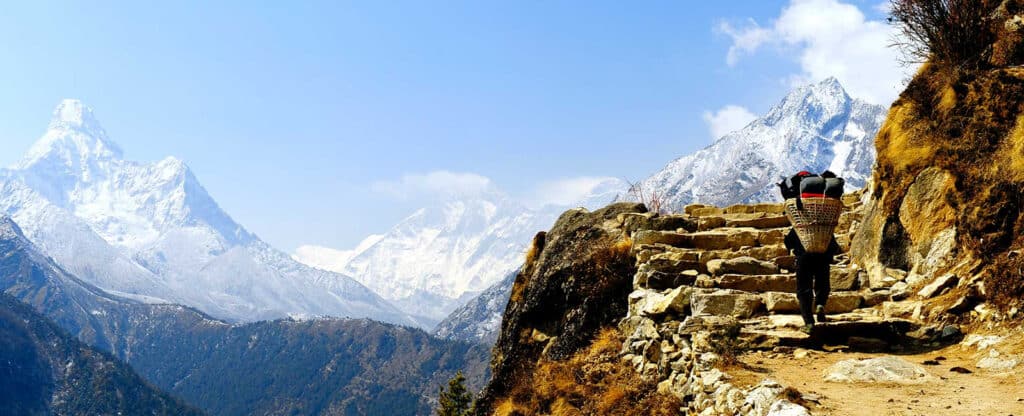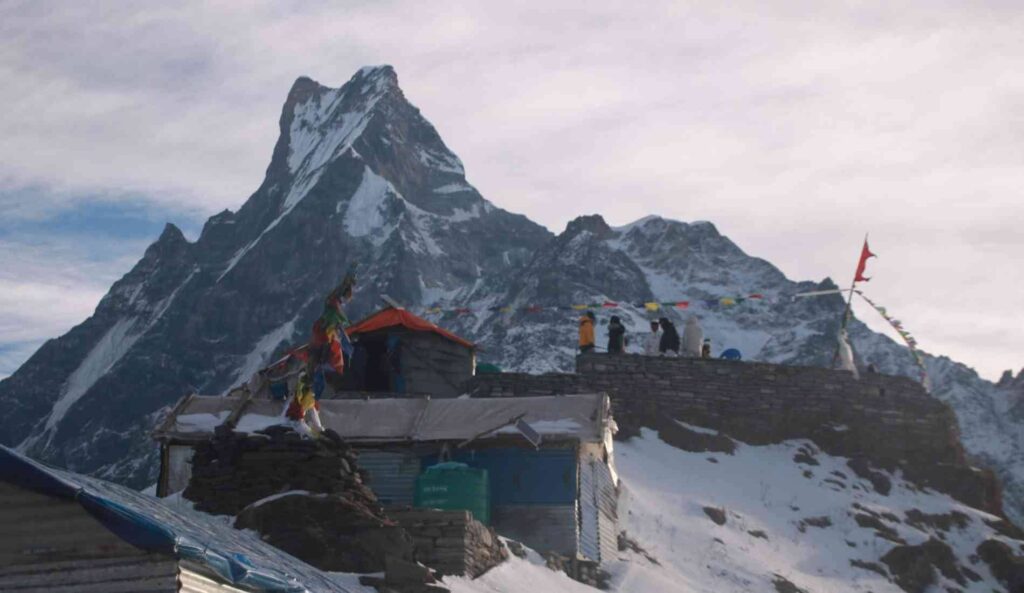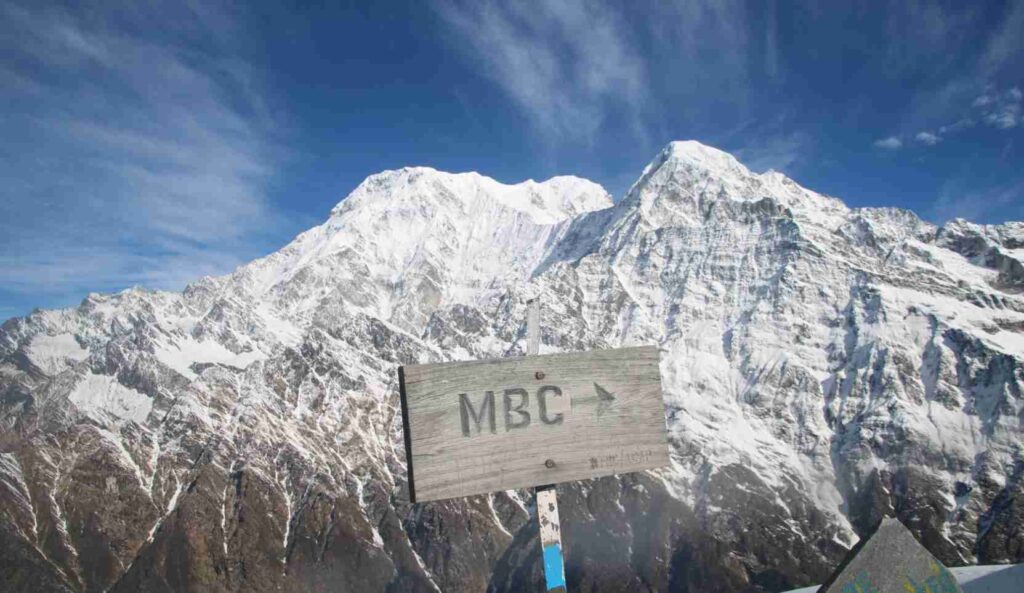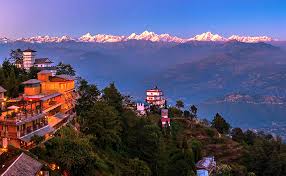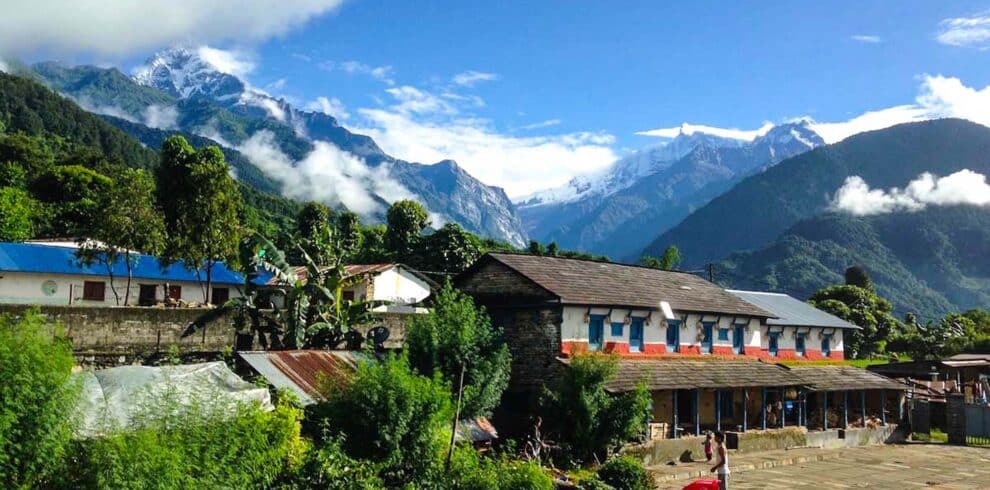Khopra Ridge Trek Info
-
Hotel & Guesthouse
-
Kathmandu
-
March to May & Sep to Dec
-
Private Vehicle
-
Moderate
-
3660 M
-
Eco-Tour, Hiking, Trekking
-
2-20
Overview
Khopra Trek is an alternative trekking route in the Annapurna Region, also known as the Khair Lake Trek. Situated at 3660m, Khopra is the main destination of the trek, offering panoramic, outstanding, and breathtaking views of mountains such as Mt. Dhaulagiri, Tukuche Peak, and a close view of the Annapurna South face, along with many other peaks. The Annapurna Khopra Trek provides a natural path through rhododendron forests. Khayer Lake is another attraction of the Khopra Trek, known for its beauty and tranquility.
The Annapurna Khopra Trek showcases what Nepal has to offer, including rice fields and cultural villages along the route. On the Khopra Trek, you’ll have the opportunity to visit Ghandruk Village, Tatopani Village, and Ghorepani, which are beautiful villages adorned with colorful rhododendron flowers. Visitors can explore the local lifestyle and cultures in these villages.
We begin our 13-day excursion in Kathmandu with visits to UNESCO World Heritage sites before heading to one of the most exotic and interesting trekking routes in the Annapurna region of Nepal: the Khopra Ridge Trekking.
We arranges the best trips at regional prices, provides first-class services, and ensures your trip becomes a wonderful memory.
Highlights Of Khopra Ridge Trek
- Feast your eyes on 360-degree views of Annapurna I, Dhaulagiri, Machhapuchhre, and countless other snow-capped giants.
- Witness the sunrise paint the peaks in golden hues, leaving you speechless.
- Immerse yourself in the trek's rich tapestry of landscapes.
- Hike through vibrant rhododendron forests bursting with color, and quaint villages.
- Consider adding a side trip to Mohare Danda. This viewpoint offers another stunning perspective of the Annapurna range.
- Hike to the sacred Khayer Lake, located at 4,650 meters.
- Khopra Ridge offers a less crowded experience. Enjoy the tranquility of the trails, and connect with nature without overwhelming crowds.
- Named after Prince Charles and his entourage, who explored the route in 1981.
- Short and easy trek with gentle uphill and downhill sections, following ridges and valleys.
- Includes a visit to UNESCO World Heritage sites in Kathmandu before starting the trek.
Itinerary
Upon your arrival at Tribhuvan International Airport, we offer a pick-up facility from the airport and arrange your stay at the most comfortable hotel in the city. You will meet the team of trekkers, and together we will prepare for the trek. Overnight stay in Kathmandu.
Today will be an exhilarating day where you will be introduced to some of the most revered Hindu and Buddhist religious sites, all of which are listed as UNESCO World Heritage sites. You'll explore the mysticism surrounding the Pashupatinath temple, Boudhanath stupa, Patan Durbar Square, and Swayambhunath stupa. Overnight stay in Kathmandu.
Our trip will start with a scenic drive by tourist bus, taking around 6 to 7 hours through lush green forests, meandering roads through the hills, and gracefully flowing rivers. In Pokhara, you can explore lakes like Phewa and visit caves or vibrant streets. The evening can be spent enjoying a walk around the lakeside. Overnight stay in Pokhara.
After beginning our trek, we will walk for about an hour through flat paddy fields and across a river. Once we cross the river, the trail starts to ascend toward Kalikasthan. After reaching Kalikasthan, we will rest and explore the surrounding area. Overnight stay in Kalikasthan.
Today's trekking trail takes us along a ridge that offers magnificent views of Lamjung Himal and the Annapurna Mountain range. Along the way, we will explore traditional villages and immerse ourselves in the local culture, all while walking through beautiful rhododendron forests. Overnight stay in Syaklung.
We start our trek early in the morning and pass through an ethnic Gurung village where we can explore the local lifestyle. The trail continues through areas rich in biodiversity, with rhododendron and pine trees all around. After a descent of 400m and an ascent of 600m, we arrive at Chisapani, which offers stunning views of the Himalayas, including Dhaulagiri and Annapurna. Overnight stay in Chisopani.
After breakfast, we trek downhill to Rupa Lake, then follow a trail that passes through scenic nature. We enjoy the natural beauty of the Begnas area before a short 12km drive back to Pokhara. In the evening, we'll spend time exploring the lakeside area of Pokhara. Overnight stay in Pokhara.
After breakfast, we drive eastward towards the capital city. After a 7-8 hour drive along the Prithvi Highway, we will reach Kathmandu. You will be transferred to your hotel, where you can freshen up and rest. In the evening, there will be a farewell dinner (Nepali Food) to celebrate the successful completion of our journey. Overnight stay in Kathmandu.
Your wonderful adventure in Nepal comes to an end today. We wish you all the best. A representative will take you to the airport approximately 3 hours before your scheduled flight.
Our team guides, porters, and accompanying staff are locals with a broad knowledge about each and every location that we travel through.
The Cost Includes & Excludes
Cost Includes
- Pick up and drop off from and to the International airport.
- 3-night hotel in Kathmandu (first two nights and last one night).
- 2 nights hotel in Pokhara.
- Annapurna Conservation Park permits.
- TIMS Card (Trekkers Information Management System).
- One porter for each two people.
- Accommodation in tea houses twin sharing (private room/ Shared bathroom).
- 3 Meals a day – breakfast, lunch, Dinner during the trek (Anything from the menu).
- All land transportation by bus / van / car.
- Sightseeing tour car A/C with driver. Farewell dinner at Nepalese cultural restaurant after the trek in Kathmandu.
- All taxes and Company service charges.
Cost Excludes
- Nepal Visa fee (bring accurate USD cash and two passport size photographs).
- International airfare to and from Kathmandu.
- Lunch and Dinner in Kathmandu.
- Monument sites entrance fees while sightseeing in Kathmandu.
- Excess baggage charges.
- Extra night accommodation in Kathmandu because of early arrival, late departure, and earlier return from the mountain (due to any reason) than the scheduled itinerary.
- Travel and rescue insurance.
- Personal expenses (phone calls, internet / Wi-Fi, laundry, bar bills - tea/coffee, hot chocolate, juice, beer, battery recharge, extra porters, bottled or boiled water, shower etc.).
- Tips for guides and porters (Tipping is expected, but not compulsory).
When preparing for the Upper Mustang Trek, it’s essential to pack wisely to ensure you have the necessary items for a comfortable and safe trekking experience. Here’s a packing list to consider:
Clothing:
- Layers below: shirts and pants that are breathable and wick away moisture.
- Layers of insulation: For warmth, wear down or fleece jackets.
- Shell exterior: Pants and jacket that are wind- and water-resistant.
- Trekking pants and shorts.
- T-shirts and long-sleeved shirts.
- Warm hat, gloves, and neck gaiter.
- Hiking socks and thermal socks.
Footwear:
- Sturdy and comfortable hiking boots with ankle support.
- Lightweight trekking sandals or sneakers for evenings and rest days.
- Extra pairs of socks for rotation.
Gear:
- Backpack (30-40 liters) for carrying your essentials.
- Sleeping bag suitable for cold temperatures.
- Trekking poles for stability and reducing strain on your joints.
- Headlamp with spare batteries.
- Sunglasses with UV protection.
- Sun hat and sunscreen.
- Water bottles or hydration bladder.
- Lightweight and quick-drying towel.
Miscellaneous:
- First aid kit with basic medications, bandages, and blister treatment.
- Personal toiletries and wet wipes.
- Snacks and energy bars for the trek.
- Waterproof bags or dry sacks for keeping your belongings dry.
- Cash for permits, snacks, and tipping.
It’s important to pack light and prioritize essentials while considering the weight restrictions for domestic flights and the limited space in your backpack. Layering your clothing is crucial to adapt to changing temperatures throughout the trek. Also, remember to check the weather forecast before packing to ensure you are adequately prepared for the conditions.
Learn details on where to buy trekking gears on Nepal.
FAQ on Khopra Ridge Trek
Yes, it is possible to trek Khopra Danda without a guide. The trail is well-marked and does not require technical climbing skills. However, hiring a guide can enhance the experience by providing local knowledge, cultural insights, and assistance with navigation.
The Khopra Ridge Trek is located in the Annapurna region of Nepal. The trek route to Khopra Ridge starts from Nayapul, a small town near Pokhara. From Nayapul, the trek leads you to the Ghorepani Poonhill trek– a popular sunrise viewpoint for Annapurna I and Dhaulagiri.
The best times to trek Khopra Ridge are spring (March to May) and autumn (September to December). The weather is mild during these times, and the rhododendron forests are in bloom.
The Khopra Ridge Trek typically takes around 12 to 14 days. This duration includes travel time to and from the trek’s starting point and acclimatization days.
The highest point of the Khopra Ridge Trek is approximately 3,660 meters (12,008 feet). This vantage point offers breathtaking views of the Annapurna and Dhaulagiri ranges.
Because of its modest difficulty, most trekkers with a respectable level of fitness may complete the Khopra Ridge Trek. The expedition does not require expert climbing skills, but it does involve daily treks lasting five to seven hours and some hard ascents and descents. To top it all off, the track is less congested and well-marked than other well-known hikes in the Annapurna region.
The highest point on the Khopra Ridge Trek is Khopra Danda, which is approximately 3,660 meters (12,007 feet) above sea level. This elevation offers spectacular sweeping views of the Dhaulagiri and Annapurna mountain ranges, making it a hiking highlight.
The easiest route to Khopra Ridge typically starts from Ghandruk, moving through Tadapani and then onto Dobato before reaching Khopra Danda. This route allows for gradual acclimatization and offers comfortable daily hiking distances.
Yes, hiring a local expert guide for the Khopra Ridge Trek is not only possible but highly recommended. A local guide can enhance your trekking experience by providing insights into the history of the region, culture and geography. They also assist with navigation, ensuring your safety, especially in the more remote sections of the trek.
During the Khopra Ridge Trek, you can expect to walk 5-7 hours daily, depending on your pace and the specific segment of the trail. The trek is designed with manageable daily distances, allowing time to enjoy the scenery and take breaks at local teahouses. The longest days are typically when ascending to Khopra Danda and, if chosen, the day trip to Khayer Lake.
Although it is helpful, previous trekking experience is not required for the Khopra Ridge Trek. Beginners who are physically healthy and ready for the rigors of multi-day hiking at modest altitudes can tackle the trek. You can better adjust to the demands of the trail by engaging in some day walks prior to the trek and maintaining a regular workout schedule.
Trekking to Khopra Ridge offers a more off-the-beaten-path experience compared to the popular Ghorepani Poon Hill trek. Khopra Ridge provides similar, if not better, panoramic views of the Annapurna and Dhaulagiri ranges, with the added benefit of fewer crowds.
Essential Info
Physical Fitness
Many people have questions as to what level of physical fitness is required for visiting Nepal, and that is extremely reliant on what activity the visitor is engaging in. With that said, for a standard trek of moderate grading (Everest Base Camp Trek is an example of moderate) the daily activity will be 7-8 hours, and elevation will generally not exceed 5,500 meters. The day’s trekking is sustained and will involve both long steep climbs, and descents with a variety of terrain underfoot from well-trodden paths, to rocks covered with ice or snow. A typical day would include a number of climbs or descents of 500 meters or more, starting after breakfast, resting at lunch, then continuous trekking until arriving at the teahouse.
In preparation for the trek, it is important to begin a training requirement at least 4 months before departing for Nepal. Three to four hours of aerobic exercise like running, walking, swimming, cycling & some gym work per week is the minimum and most will find it beneficial to add some basic strength training to their physical fitness routine. One of the best ways to prepare is to take practice hikes with a daypack roughly the same weight as what you will be taking on the trek. Do this only after a baseline of fitness has been reached. Moving fast is not the end goal, rather endurance is the focus, and will provide a more enjoyable and safe adventure.
Trekking Seasons in Nepal
There are two main seasons in which Nepal sees the most amount of visitors. Fall (September through November) being the most popular, and spring (March to May) coming in close behind. The summer months of June, July and August are the monsoon season and as such the trails are mostly washed out, and roads can sometimes be impassible due to landslide activates. Not to mention the view is non-existent. Still, there are a few places that lie in rain shadow areas and see significantly less rain if any at all, and summer can be a good time to visit these places.
Winter in Nepal is dry, with very cold nights where temperatures can drop to -20°C at the highest altitudes, but the days are pleasant and sunny. Additionally, the trails are much less crowded during this time of year. In Kathmandu, maximum daytime temperatures reach around 20°C.
Fall is the most popular because it’s after the monsoons, and the air is dry, the days are sunny, and everything is green in the lower valleys from the excessive rains. Spring is a popular choice because some rain returns, but the weather is generally warm and dry, and flowers are in bloom in the lower elevations.
Trekking Day
A typical trekking day begins with a cup of tea at around 6 in the morning. It is advised to pack your trekking gears in a duffle bag and essential supplies in your day pack in these early hours. After having breakfast, we begin the trek and head along the trail at around 8 am. The morning walk is designed to be longer as we begin with refreshed bodies and enthusiasm. Following a good morning’s walk, we make stop for lunch at around 11.30 am. The lunch involves group meals enjoying the vicinity around the stop. You can explore the surrounding or use the time according to your own consent. After resting for about an hour or two, we resume our trek to reach teahouse or camp by 3-4 pm. The afternoon walk is relatively shorter and can involve games and side trips as organized by the trekking guides. You also can enjoy breaks during the trek to relax, read or stroll around the area. You can converse with the local people and observe their lifestyle. Dinner is served around 7 in the evening to round off the day.
Meals and Accommodations
During the length of the trek, the accommodation style is commonly referred to as teahouse. These are family-run basic lodges that fill the role of the restaurant, meeting place, and boarding house for tourists. Electricity can be found in the rooms, which means one light bulb, and one or two outlets for charging electronics. The common areas are also lit by electricity. Teahouses may use solar, hydroelectric, or have electrical lines running into the village, so the commonality and availability of electricity may vary.
Most teahouses have private rooms, though if the trek is in a more remote or high altitude place dormitories are the norm. Each room has 1 or 2 single beds with basic bedding, and the bathroom is shared. Expect a mix of western and squat style toilets in the bathrooms.
Breakfast and dinner are taken at the teahouse and these lodges have large family style dining rooms centered on a stove to provide heat. The menu will have Nepali style western foods such as pasta, pizza, pancakes, burgers, and fries. Also on the menu is the traditional Dal Bhat meal. This is a lentil soup with rice and vegetable or meat curry. Most menus will also offer a smattering of local cuisine.
Internal Flight Delays
Nepal is an incredible country of mountains and valleys, rivers and green rolling hills. With this incredible diversity of landscapes, road travel can be extremely time consuming and flights within Nepal to reach popular trekking destinations is a must. Along with this mountainous terrain also comes the possibility of in climate weather. Not to mention the incredibly high number of visitors during peak seasons makes internal flight delays a very real possibility. To manage this possibility, it may be helpful to have a few extras days on either end of your tour. If any cancellations or flight delays do occur (high chances of flight delays from around Kathmandu to Lukla, Everest region), we also provide services to arrange helicopter to help you to be on your schedule on the premises of Civil Aviation Rules in Nepal which state that helicopters can fly if the visibility is 1500m. The cost ranges from USD350 to USD650 according to the number of passengers. The payment can be made either to the helicopter company or to us directly and can be made either by cash or using a credit card. It will also be helpful to purchase and review your insurance as some of the alternative measures for travel may be covered. Flight insurance too may cover changing your international flight if necessary.
Travel Insurance
Many expeditions and tours require that travel insurance is purchased prior to arriving in Nepal, but other treks and tours may not. However, travel insurance is definitely an important consideration. There are a number of reasons to consider insurance. Firstly, it may be required, so check to see what is being asked for by the company. Second, Nepal is a landlocked country, and there are few direct flights. Travel in and out can encounter some disruptions and if purchasing insurance, make sure flight delays and cancellations are included. The next reason to choose insurance is that, though every safeguard is in place during your tour, there are always extenuating circumstances that may result in an accident. Read the fine print of insurance policies to ensure trekking or any other activity you are engaging in is covered, as some policies have stopped covering trekking in certain places. It is impossible to have a relaxing trip without the comfort of good insurance, so do the research and choose carefully.
Nepal Visa Entry Procedure
For entry into Nepal, there are visa requirements everyone (except Indian nationals) must complete before being allowed to pass through immigration. This is for air travel as well as overland transportation. Most visitors may obtain a visa to enter Nepal, however, there are exceptions.
Three options are available for entry
15-day single entry: US $30
30-day single entry: US $50
90-day multiple entries: US $125
Please have a passport valid for at least 6 months from the time of entry, and have cash ready, preferably in US dollars, though there are other currencies Nepal Immigration accepts. If you are entering via overland, you must have US cash and 3 passport photos. For arrival by air, the kiosks at the airport take your picture for you.
For the most up to date list of exceptions for visa on arrival or to obtain the most current visa information, visit the Nepal Department of Immigration website.
Acute Mountain Sickness (AMS)
Acute Mountain Sickness is usually seen in un-acclimatized people shortly after ascent to high altitudes. The condition occurs due to the thinning of air as the altitude increases. The condition, if not taken seriously and treated immediately, can be life-threatening and its symptoms can be seen generally above 3000 meters. Some of the symptoms of AMS are nausea, vomiting, tiredness, shortness of breath and cerebral pain. The treks are designed to properly acclimatize you to the change in high altitude climate and sufficient precautionary measures too are taken to take utmost caution. We also equip our staffs with cell phones and satellite phones in occurrence of any emergency cases. We are greatly driven to keep the safety and security of our clients as our foremost concern.
Drinking Water
Water is essential for life, and clean water is imperative while on holiday. When choosing to visit less developed countries it is a concern that all travelers should consider. A few options are available when trekking or traveling in Nepal that will mitigate any chances of drinking contaminated water which could cause disruption of an otherwise fun adventure. The first consideration to take into account is that tap water should not be ingested. That even means when brushing your teeth. Most will choose to buy bottled water and if doing so make sure the cap has not been opened previously. Plastic bottle refuse is a problem, and with that being said there are other options on the market to assist in making water drinkable. Your local outdoor store can help with choosing what option might be best to use in conjunction with a reusable bottle. Your guide can also steer you to water that has been filtered and purified so ask him or her what is available.
Arrival Instruction
Upon your arrival at Tribhuvan International Airport, our company representatives are stationed to welcome you to the country. We request you to carefully look for your name being held by our representatives following the events upon landing. The representatives are responsible to escort you to your hotel in Kathmandu. You will see men offering you to carry luggage and take you to your destination as you exit the airport. We request you pay no attention to these people and follow the designated representatives and follow their instructions. You will also need to keep an eye on your luggage and belongings to avoid any complications.
Traveler Reviews
These genuine and honest reviews are provided by travelers who have previously journeyed with Aarohi Holiday and its team. The testimonials and firsthand experiences showcased here are sourced from well-known travel platforms such as TripAdvisor, Google, Facebook, and TrustPilot, etc.


